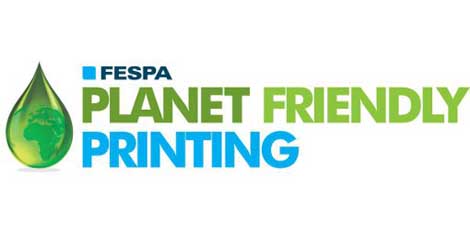
FESPA and environmental research initiative Verdigris have confirmed a new working Partnership. Through their relationship, FESPA and Verdigris will share information, explore new trends and educate the FESPA global community about a range of issues surrounding environmental sustainability.
By working together they will inform FESPA visitors and exhibitors with valuable and informative content. This content, provided by Verdigris, will include weekly blogs and quarterly features which will be published within the Planet Friendly Printing area of www.fespa.com. Visitors and members of FESPA will benefit from independent advice from the Verdigris team of experts on how to embed sustainable printing techniques within their business.
"We are very excited to welcome our latest Verdigris member," says Verdigris founder Laurel Brunner. "We look forward to working with FESPA to support their already energetic efforts to raise environmental awareness in the wide format sector."
FESPA’s Head of Membership Services, Chris Smith, says, “Our new venture with Verdigris is another example of FESPA’s commitment to supporting the global print community in becoming more sustainable. This is a key issue that we have championed within our global community since 2004 by encouraging printers to embrace more planet friendly printing practices.
The support that we will have from Verdigris will be invaluable in helping FESPA to continue to provide our National Associations and their members with access to new ideas, guidance and in-depth knowledge across all areas of sustainability.”
FESPA’s Planet Friendly Printing initiatives are part of its ongoing Profit for Purpose programme which reinvests surplus revenues from FESPA exhibitions for the benefit of the global FESPA PSP community, through education, knowledge-sharing, research and networking initiatives.
Environment - Green Events
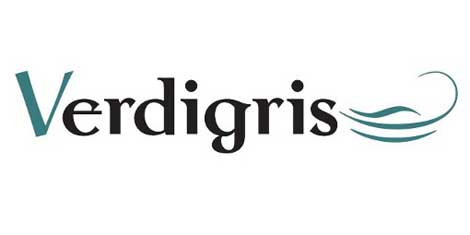
Xerox Corporation is the latest company to join Verdigris, the not-for-profit print environmental research initiative, as a Founder Member. Xerox joins Agfa, Canon, drupa, EcoPrint, EFI, Fespa, Fujifilm, HP, Pragati, Ricoh, Unity Publishing and Xeikon as Verdigris supporters.
Verdigris helps print buyers, printers and publishers evaluate the carbon footprint of print and electronic media, from the point of file creation via production to final distribution, use and disposal. The goal is to raise awareness of print’s capabilities in reducing environmental impact through cooperative content development shared with an international network of trade publishers.
“At Xerox, sustainability is our way of doing business,” says Gina R. Testa, vice president, Graphic Communications Industry, Xerox. “We have identified five key areas where we can make a positive impact across our worldwide value chain: energy reduction, preserving biodiversity, preserving clean air and water, preventing and managing waste, and ensuring health and safety. In all these areas, Verdigris plays a role in dispelling myths about print’s impact by helping the print industry present a coordinated, well-argued and well-documented case for print as a medium of choice.”
Welcoming Xerox to the Verdigris project, founder Laurel Brunner says, “We’re delighted that Xerox is on board for several reasons. The support of such a recognised brand validates and lends weight to what we are doing, while the financial support that our Founder Members provide ensures we can continue the work, as well as helping us develop new initiatives.”
Launched at drupa in 2008, Verdigris provides free research and content on a regular basis to a global network of 39 influential publications in 33 countries. Participants in the project can use Verdigris content to educate their printing communities about print’s environmental impact, and to help raise print’s positive profile. Verdigris content—which is independently managed by people who know and understand print technology— explores and analyses the issues facing publishers and printers to help them manage their carbon footprints, while continuing to conduct a profitable business. Verdigris is also a major contributor to the development of ISO 16759, the standard for measuring the carbon footprint of print media products.
The Verdigris website provides a single point of reference, not only to access Verdigris data and information about other environmental developments, but also for links to other useful environmental websites. The Verdigris site also has a growing list of the world’s printers compliant to ISO 14001, the environmental management standard.
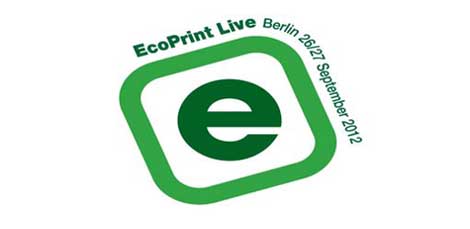
EcoPrint has been announced as the latest associate member to support Verdigris, the environmental initiative from graphic arts research group Digital Dots.
Verdigris is a not-for-profit research initiative designed to help printers and their customers understand more about the environmental impact of print media. The goal is to raise awareness of print’s positive environmental impact through cooperative content development shared with an international network of trade publishers.
With a focus on Retail, Interiors, POP/S, Packaging and Promotional Print, the content for EcoPrint Europe (Berlin, 26th and 27th September 2012) is designed to provide practical answers, guidance and solutions for any business from the world of print that wants to make a strategic investment in sustainability. Featuring practical and inspiring content that focuses on reducing waste, minimising cost and increasing profit, EcoPrint participants will benefit from connecting, discussing and discovering ideas and innovation for successful green print production.
Marcus Timson, director of EcoPrint organiser FM Brooks, says, “We fully support Verdigris’s focus on gathering and disseminating the facts about the environmental impact of specific media products, which is in line with EcoPrint’s position as a forum which will provide print professionals with a defined, practical guide to implementing and enhancing profitability through a sustainable approach to the print business. Both Verdigris and EcoPrint share the belief that hard, empirical data is essential to achieving this.”
Welcoming EcoPrint Europe’s support, Verdigris founder Laurel Brunner says, “In important respects EcoPrint and Verdigris share the same philosophy about how to prove and promote print’s sustainable credentials, an issue that for the most part industry events have so far addressed in a haphazard fashion. Too often sustainability has been a sideshow, but EcoPrint Europe puts it centre stage, where it belongs, and where print producers and print consumers can begin to really understand the issues and evaluate suppliers’ offerings.”
As an example what how EcoPrint differs from other events, she cites the EcoPrint Exhibitor Review Committee, which provides an independent review process for the products, services, applications and solutions at the exhibition, ensuring that exhibits are consistent with EcoPrint’s objectives of enhancing awareness of print’s sustainability, low carbon impact and competitiveness.
Launched at drupa in 2008, Verdigris’s aim is to investigate the environmental impact of print media, helping print buyers, printers and publishers evaluate the carbon footprint of different media. Verdigris provides free research and content to a global network of industry publishers on a regular basis. Participants in the project can use Verdigris content to educate their printing communities about print’s environmental impact, and to help raise print’s positive profile. Verdigris content—which is independently managed by people who know and understand print technology— explores and analyses the issues facing publishers and printers to help them manage their carbon footprints, while continuing to conduct a profitable business. Verdigris is also a major contributor to the development of ISO 16759, the standard for measuring the carbon footprint of print media products.
The Verdigris website provides a single point of reference, not only to access Verdigris data and information about other environmental developments, but also for links to other useful environmental websites. The Verdigris site also has a growing list of the world’s printers compliant to ISO 14001, the environmental management standard.
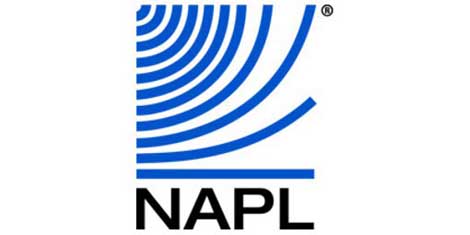
“Toshiba may have meant well when it attempted to publicise its ‘print leaner and greener’ initiative with a ‘National No-Print Day’ campaign, but it was well off base when it pointed a finger at print as an anti-tree medium,” says National Association for Printing Leadership (NAPL) President and Chief Executive Officer Joseph P. Truncale, Ph.D. “Despite this all-too-often repeated anti-print “save a tree” refrain, print and paper are simply not enemies of the environment.
“Reading a book on a tablet may be convenient, but it is not more environmentally friendly than reading a printed copy,” he continued. “Paying a bill online may be quicker, but it is not better for the woodlands than paying it by cheque. Why? Because paper is a renewable, recyclable, and biodegradable resource, while computers and other electronic devices are comprised primarily of one-time-use only metals and hydrocarbon-based materials, and they require energy created principally through the use of other non-renewable resources.”
NAPL has long pointed out that paper production uses trees, but it does not destroy forests. Paper companies depend on trees for their business, so they plant more trees than they harvest each year, carefully managing forests on privately owned lands for maximum tree growth and production.
In fact, despite the billions of sheets of paper that have been produced, the United States has about 12 million more acres of forest land now than it did a quarter of a century ago, and overall forest inventory has increased 49% over the last half-century. Every day, more than 1.7 million trees are planted in the U.S., nearly half of them (45%) by the forest products industry. You might say that every printed page helps plant a tree. By comparison, according to Time magazine, more than 130,000 computers are discarded by Americans every day.
The problem at landfills is not paper, which is recycled at very high levels, providing many towns and cities with an important income source. The real waste problem is the rapidly escalating number of discarded computers and other electronic components, which are not biodegradable and will sit in landfills for generations, taking up increasing amounts of space and ultimately leaching lead, mercury, and other toxic metals, hazardous chemicals, and plastic residue into the soil. Electronics now make up the fastest-growing part of the U.S. waste stream.
Everyone in the printing industry has the same interest as Toshiba in making our processes as environmentally friendly as possible, and we have all been working toward that goal for decades. Witness, for example, the growth of forest-certification and chain-of-custody programs, the new technologies that increase the paper yield per trees—in some cases, 90,000 sheets from a single cord of wood, and the use of renewable biomass fuels to power paper manufacturing—since 1990, purchased energy and fossil fuel use per ton of paper production has been cut by 26%.
As NAPL stated in an article two years ago, “The environmental impact of any communications process generally occurs at one or more of three stages: the creation of the medium being used for the message, the transmission of the message, and the conclusion or aftermath of the process. At each point, paper-based communications have a less injurious environmental effect than their electronic counterpart. Print and electronic media will coexist in the future and complement each other’s strengths. And one of paper‘s undeniable strengths is its position as an environmentally friendly messaging medium.”
Whatever Toshiba’s well-intentioned environmental goals may be,” said Truncale, “it is simply short-sighted and wrong-headed to suggest that the environment is harmed by the use of paper and printing.”
In Brief:
- Paper is a renewable resource, grown and replenished in managed forests; the precious metals and hydrocarbons required to create computers and other electronic devices are not—they require mining and drilling that can damage the surrounding ecosystem, and when they have been removed from the earth, they are gone forever.
- Paper is recyclable—nearly two-thirds of U.S. paper consumed is now recovered—and much is reused, more than one-third of the world’s total fiber supply now coming from recycled paper; computer components are used once—often after just a few years of rapid obsolescence—and then this toxic e-waste is discarded in landfills or shipped to developing countries.
- Paper requires only sunlight or the power of a single light bulb to be read and used; computers require a continuous stream of electricity generated predominantly by non-renewable fossil fuel energy sources. In 2006, for example, Internet data servers alone purchased twice the amount of energy purchased by the U.S. pulp and paper industry.
For more information on NAPL, please visit www.napl.org
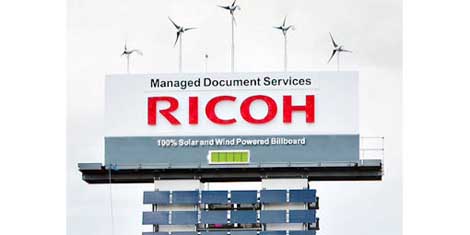
Ricoh will position the month of June as “Ricoh Global Eco Action Month” with the aim of widespread, sustained Eco Actions by Group employees around the world. As part of “Ricoh Global Eco Action” Ricoh will turn off the lights on all billboards, Ricoh logo signboards and night lighting facilities at all Group companies around the world on the night of June 5th - the United Nations World Environment Day. The 100% eco-powered billboards in New York (Times Square), London, and Sydney will be excluded.
“Ricoh Global Eco Action” began in 2006 as an environmental event for enhancing awareness among Group company employees worldwide and promoting environmentally friendly thinking actions. The theme of the seventh year of “Ricoh Global Eco Action” is “THINK & ACT. Think and act on your own.” Employees are individually encouraged to focus on energy conservation at work and at home, host and participate in environmental events, and take other actions that reflect their concerns for the environment. These events are announced for participation via posters, mail news, and through the transmission and sharing of information on Facebook and the Ricoh intranet.
Ricoh continues with the “Ricoh Global Eco Action” expanding its environmental conservation movement from Group employees to their families, friends, business partners and clients.
Eco-Powered Electronic Billboards
As with “Ricoh Global Eco Action,” the eco-powered electronic billboards excluded from the upcoming switching off of signage represent one of the measures being undertaken to “expand the circle of global environmental conservation.” The initiative is based on the idea that “even if the billboards don’t light up and fulfill their functions as signage due to weather, we hope that the message the billboards convey will raise many people’s environmental awareness and lead to the realization of a sustainable society.” Experimental lighting began in April 2009, and following the completion of the first billboard at Times Square, New York in 2010, additional billboards were installed in June and July last year in London and Sydney, respectively. The average combined power generation of the three sites has been calculated at approximately 150,000 wh per day.
Ricoh’s approach to environmental management goes beyond simply meeting regulatory requirements, to combining ecological concerns with its business strategy to drive environmental conservation and profitability. With sustainable innovation at the heart of its business, Ricoh is also expanding its services for its customers. It is building upon the award winning Sustainability Optimisation Programme, designed for the office, by offering the Carbon Balanced Printing Programme as a service specifically for Commercial Printers. Both programmes are accredited by the British Standards Institution (BSI) and focus on helping businesses to reduce impacts wherever possible and offset the unavoidable carbon emissions through carbon credits generated by clean energy projects in which Ricoh has invested.
James Deacon, head of corporate responsibility at Ricoh UK says, “At Ricoh, we have always considered our impact on the world and demonstrated corporate social responsibility, so much so, that it is ingrained into our corporate values and integrated into the very heart of our operations. By dedicating the month of June to raising environmental awareness among our customers, suppliers and employees, we can make a real and positive change to the environment, further helping our clients to be more profitable and sustainable at their own sites as well as taking action in our own operations.”
For more information, please visit www.ricoh.co.uk
[photo shows Ricoh's eco-billboard in London]
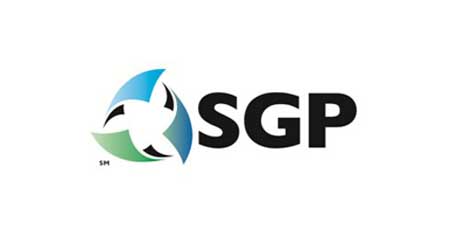
Sustainable Green Printing Partnership (SGP), a non-profit organization providing sustainability certification in the graphic communications industry, has launched a new search feature on its website that makes it easier for print buyers and specifiers to locate SGP-Certified print facilities. Visitors can now search up to 14 categories of printing processes, including bindery and finishing and gravure, web, and screen printing, and more. The search results show the products that are produced in the Certified facility, as well as the printing processes used. In the coming months, more enhancements will be added to SGP's website as part of the organisation's ongoing goal of connecting print buyers with facilities that employ best practices in sustainability.
"SGP is the only Certification programme in North America to meet the print industry's sustainability expectations," comments Marci Kinter, chairperson, Sustainable Green Printing Partnership. "The new search feature is just one of the steps we're taking to make it as easy as possible for print buyers to partner with the Certified print community."
SGP's independently audited Certification program is receiving growing support from print buyers, including adidas and other retail brands. SGP Certification gives print buyers confidence that the printer in their supply chain is operating sustainably and transferring the smallest possible footprint to their printed product. In addition to offering verification of printers' sustainable operations, it also ensures adherence to continuous sustainability improvements.




